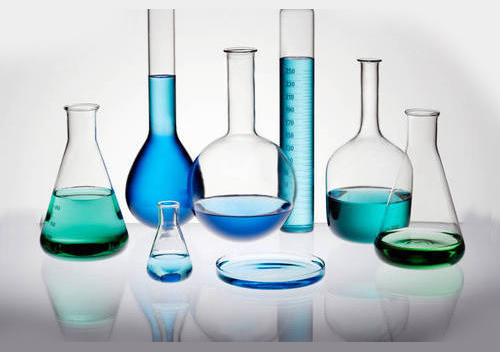Purity is very important in chemistry since it functions as an analytical criterion. If you know the importance of purity in chemistry, you can work out the focus of an analyte by comparing it to the known criterion. An unknown example of a material can also be recognized in a similar way.
We will explain the below quetions in this article:
What Does Purity Mean in Chemistry?
What are the Chemical Grades of Purity?
How to Test for Purity in Chemistry
Calculating the Percentage Purity in Chemistry
What is the Instrument Utilized to Measure the Purity of Water?

What Does Purity Mean in Chemistry?
In chemistry, purity focuses on a particular substance symmetrical to other compounds. It could describe a high focus of an element or substance, or a mixture of the two. Purity can additionally refer to the lack or negligibly reduced focus of other compounds.
For instance, we talk about the purity of alcohols in terms of the percent of ethanol they include in regard to water. Apart from ethanol, alcohols like beer and also wine contain contaminations because of their various other active ingredients as well as traces of suspended fragments.
Lab water is an additional example. It's classified into different levels of purity. Type I quality water is ultrapure and also is used for professional as well as laboratory applications such as:
● Culturing cells and also cells in petri dishes
● Liquid chromatography evaluation
● Gas chromatography analysis
● Molecular biology experiments
● Inductively combined plasma mass spectrometry or ICP-MS.
The high purity of water used in these experiments and evaluations is crucial to the accuracy of outcomes. Distilled water has a neutral pH and also virtually no put on hold solids. This suggests it will not interfere with the instrument analyses or contaminate the cell societies.
A substance that has a well-known purity acts as a standard or benchmark for testing various other comparable substances.
As an example, the purity of gold is commonly gauged in karats. This is an old system of dimension that splits the proportional weight of gold into 24. One karat gold is equivalent to 1/24th of the whole or about 4.1667%. For this reason, pure gold is 24 karats.
What Is the Chemical Grades of Purity?
Different countries, companies, and global organizations have their very own standards for chemical purity. The details names for these chemical qualities might vary, yet they usually refer to usual requirements or varieties..
Some typical chemical grades made use of in industries are listed here.
● Reagent grade -- this amounts the ACS quality, which has a purity criterion of at the very least 95%. The quality is used as a criteria in logical chemistry, along with in different food, professional and also pharmaceutical applications.
● ACS grade -- the a/c grade is established by the American Chemical Culture. Chemicals might either meet the minimum requirements set by the society or exceed them. The minimal purity for an air conditioner grade chemical is 95%, which is commonly an acceptable requirement for a lot of food and pharmaceutical items.
● USP grade -- short for USA Pharmacopeia quality, the USP grade is an acceptable standard for several pharmaceutical-related lab applications. It incorporates medical and first-aid items, as well as many individual care items. Its purity degree can be as high as 99.7%.
● Technical quality -- this is commonly approved for industrial and also industrial applications, yet it is not appropriate for food, medicine or medical and clinical applications.
● Research laboratory quality -- this grade is typically made use of in institution research laboratories for academic functions. It doesn't have specifications regarding its specific degrees of purity and also is not adequately pure to be ideal for food, medicine or medical applications.
● NF grade -- this is based on the National Formulary (NF) requirements and amounts to or above the NF and also USP requirements. USP and also NF worked together in writing and publishing a publication of public pharmacopeial criteria which is made use of by the pharmaceutical industry.
● Detoxified quality -- just like the research laboratory-grade, this has actually not gotten any official requirement as well as is not recommended for food, medication or professional applications..
How to Examine for Purity in Chemistry?
There are different qualitative and measurable approaches you can use to evaluate the purity of substances. These approaches are frequently used in industrial quality control, medical diagnostics, pharmaceutical formulas, environmental research studies, and also to apply safety and security standards..
The numerous methods of testing can be grouped right into the complying with physical as well as chemical examination groups:
● Making use of radiolabeled compounds -- this method is typically utilized in the pharmaceutical industry to study the biochemical procedures associated with medicines. Carbon substances are tagged making use of radioactive isotopes, which observe their responses. The purity of the substances being checked can be established by directly gauging the percentages of marked compounds during a reaction.
● Utilizing a pure basic sample -- this is a totally physical approach of screening, which makes it very inaccurate. It counts on contrasting the physical residential or commercial properties of a compound (for example, scent, preference, as well as appearance), to a basic 'pure' example to identify if there are pollutants. Undoubtedly, this approach is restricted to non-toxic materials.
● Figuring out the boiling point as well as a melting point -- is a practical and also the basic technique of testing for purity. Once again, this technique relies on a typical sample. Compounds such as hydrocarbons have particular steaming factors as well as melting points. If the test substance differs the well-known boiling point or melting point of its pure sample, it probably has some significant contaminations.
● Colorimetric methods -- as the name recommends, colourimetric techniques utilize colors to identify the purity of substances. This technique is usually made use of to test biochemical compounds that alter colours when exposed to specific reagents. One application of this is checking for the presence of illegal medicines.
● Analytical testing approaches -- these are one of the most accurate techniques for developing the purity of a compound. A sort of measurable approach, they aim to determine the structure of a material at the molecular degree. Analytical testing techniques consist of titration, spectroscopy, chromatography, and also optical turning.
Determining the Portion Purity in Chemistry.
Computing the percentage purity of a compound is a relatively uncomplicated procedure. You simply need to split the mass of the pure substance in the unclean sample by the complete mass of the unclean example and after that increase it by 100.

What is the Instrument Utilized to Gauge the Purity of Water?
Various instruments are used to check the purity of water, depending upon the problems and type of impurities. The instruments can either be mobile and extremely compact for on-site fast screening or they can be cumbersome and also repaired in a research laboratory for even more exhaustive screening.
They can feature an analog, electronic or video display, and the controls can be hand-operated, electronic or have a computer user interface. The place can either be hand-held or modular, bench-top or panel-mounted.
These different tools can spot or determine the complying with criteria in water:
● Turbidity/suspended solids.
● Liquified oxygen as well as biological oxygen needed.
● Chlorophyll or algal pigments.
● Oil in water.
● The acidity or basicity of water.
● Dissolved solids.
● Conductivity or voltammetry high quality of water.
SL Tec has rich experience in design and formula of different chemistry for various chemical plants. If you need any professional guide and help, please feel free to contact us for further consultance.

















